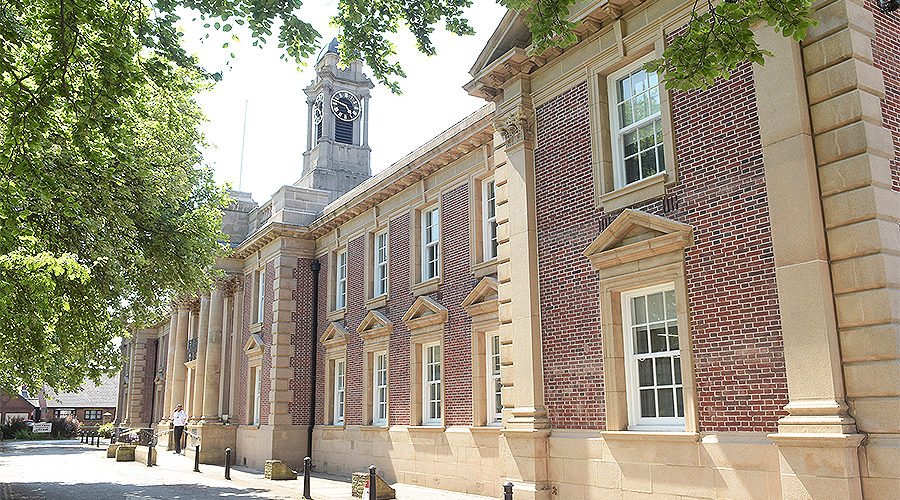Tracey Jackson, Business Development Manager for Howells Patent Glazing, looks at the importance of daylighting in public buildings and how it can benefit landlords and building owners when it comes to energy savings as well as the health and wellbeing of building occupants and visitors.
Howells Patent Glazing
BS EN 17037 was published in May 2019. The European standard encourages building designers to assess daylight in buildings and ensure a successful daylighting solution. It also looks at the environment around the building and the configuration of interior spaces to help those who design and light buildings to use daylight as well.
This standard supersedes BS 8206-2:2008 ‘Lighting for Buildings’ – code of practice for daylighting. Key differences include the addition of new guidance: the use of median daylight illuminance; a new metric for daylight glare; a new assessment method for sunlight in buildings; and new ways of assessing view.
While this standard focuses on daylighting in new buildings, the principles can also be applied to retrofit and refurbishment projects. This would be extremely beneficial for improving the energy performance of older, more dated buildings, many of which sit within the portfolio of UK public bodies.
Building performance
Daylighting can have a positive impact on overall building performance, which can easily translate into reduced energy costs and environmental benefits.
To realise these advantages, the right glazing product must be selected early in the process and, ideally, as part of a whole building design. Accuracy is also key – with the correct performance specification, size and solution being selected. As with any project, changes late on can be expensive so by addressing daylighting early some of this expense may be avoided.
The daylighting solution should be considered as part of the whole building design and, as such, will make a positive contribution to the whole building performance.
Reduced dependency on electric lighting
Daylighting reduces dependency on artificial lighting. This has far-reaching benefits for both building owners and occupiers. The challenge for building owners and landlords is that public buildings are often complex, with internal layouts and lighting controls and heating, ventilation and cooling (HVAC) systems.
Unlike natural light, electric light emits waste heat, and this can cause problems with heating and cooling, which, ultimately, leads to associated costs.
A study by the University of Manchester, entitled ‘Guide to energy saving in the office’, found that up to 40% of a building’s electricity is accounted for by lighting. Office lights left on overnight for a year use enough energy to heat a home for five months. Understandably, the university recommends that building owners take advantage of natural light to combat this dependency.
Roof glazing
One of the most effective ways to do this is to introduce roof glazing to maximise natural light during daylight hours. This may be a conceived as a rooflight, roof lantern, patent glazing system or lightwell. Whichever, it can make a positive contribution to the building’s thermal and energy performance and ventilation.
Glazed roof products are proven to deliver up to three times more daylight than a vertical window fitted in the building’s facade. Optimum performance can be achieved with the correct siting, orientation and gradient, all of which help avoid glare and unwanted solar gain.
Rooflight manufacturers combat the issue of solar gains through high-performance glazing. Working with the specifier or client, they will suggest the most appropriate glazing for the site. There are a wide variety of glass options, both coated and uncoated. Solar control glass, for example, can help retain heat in cooler months – once again, helping to reduce energy costs.
Daylight for health and comfort
While evidence proves the power of natural light in reducing building running costs, there is also a growing emphasis on its ability to improve occupier comfort.
The average Brit spends 22 hours a day indoors, therefore, it is little wonder that we are seeking ways to improve indoor living, work and leisure conditions.
Daylighting is proving to be one of the most powerful tools in building design. Providing diffused illumination, daylight is hugely beneficial for our physical and psychological wellbeing. It helps us focus, promoting productivity in work and education settings and maintain our daily cycle of activity and sleep known as the circadian rhythm.
Natural light is also more dynamic. It changes constantly, which can be more stimulating. This not only boosts mood and morale but can help combat fatigue.
With so much of our time now spent indoors, designing healthy, comfortable work, leisure and municipal spaces is more critical than ever. The provision of daylight and better connectivity to the outdoors is key to this.












